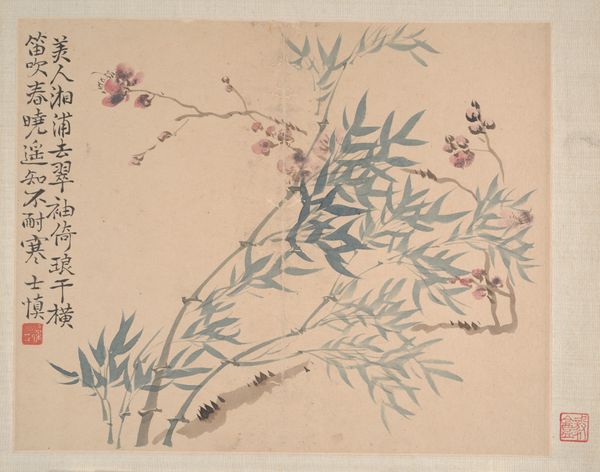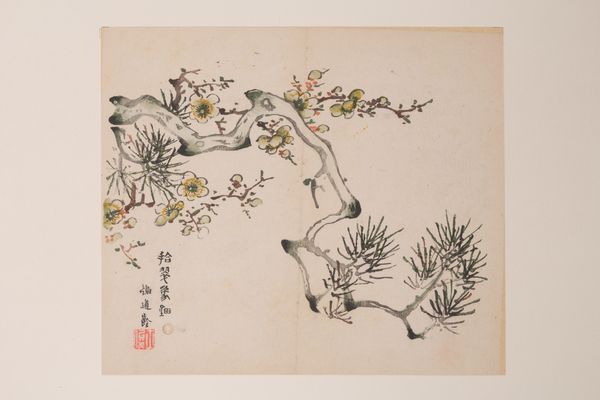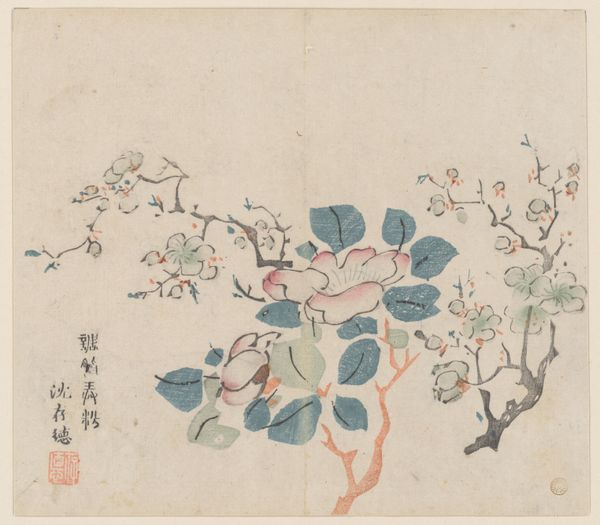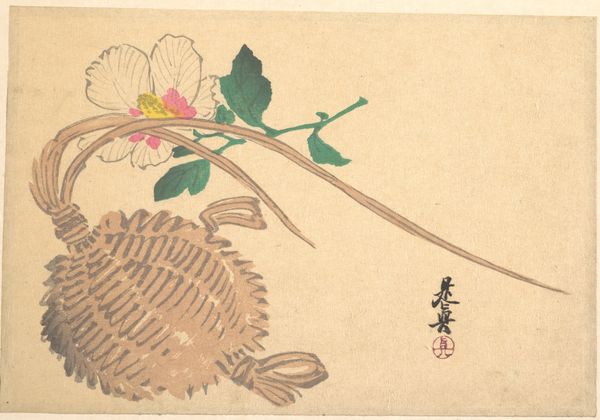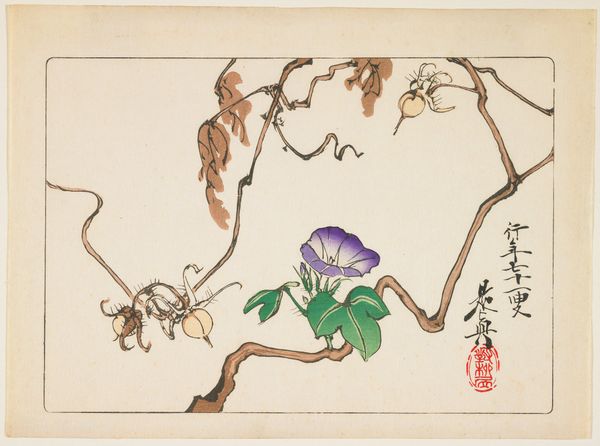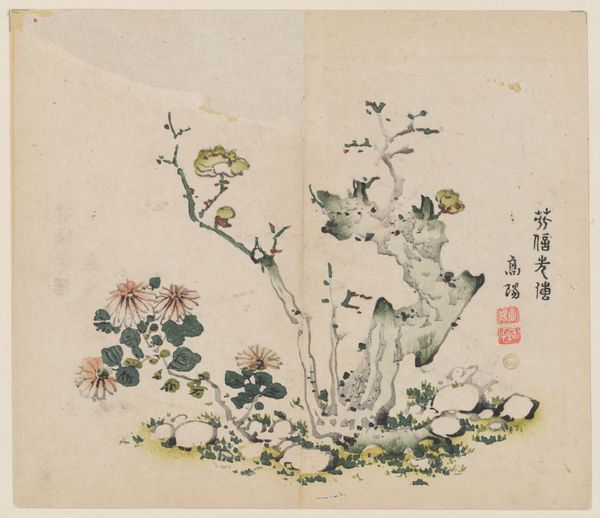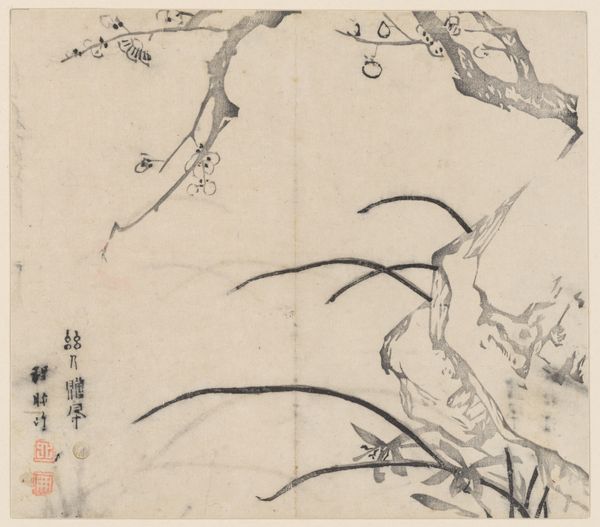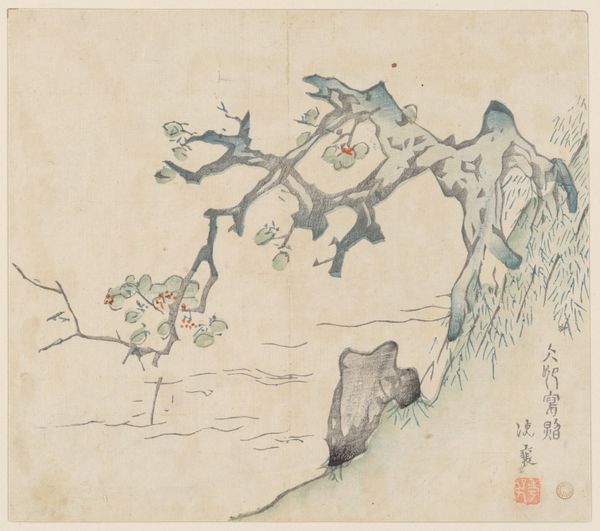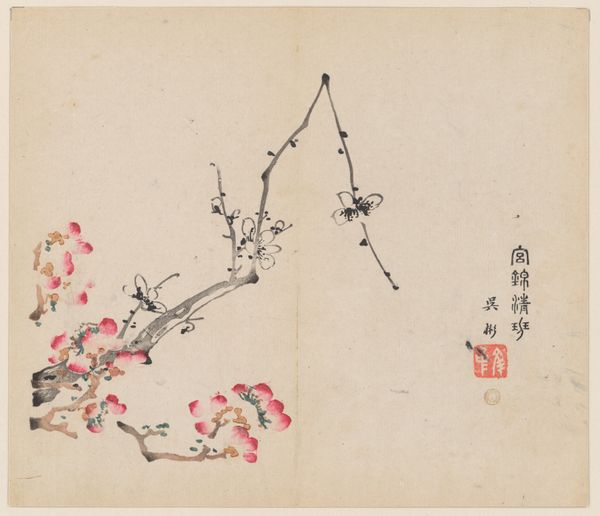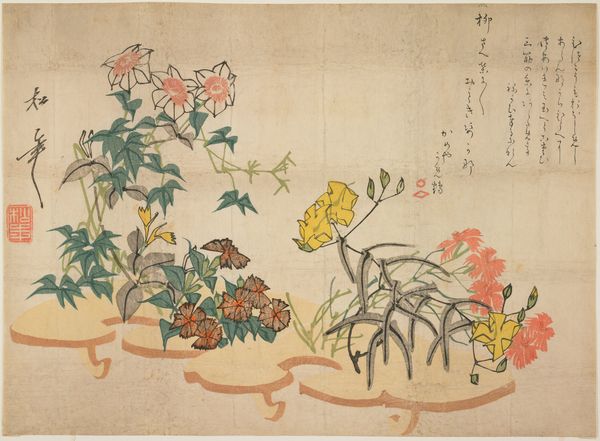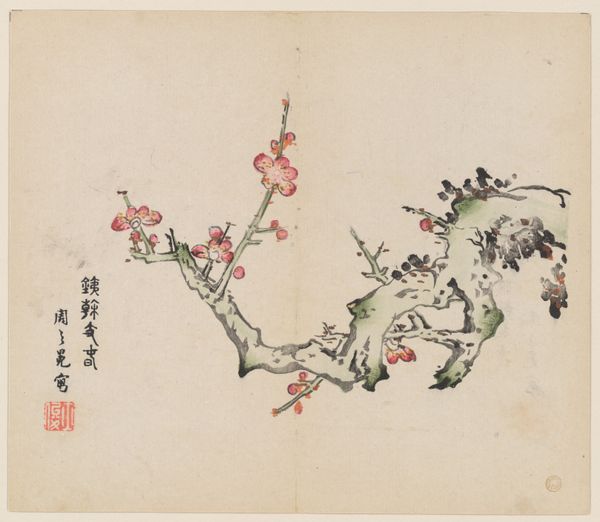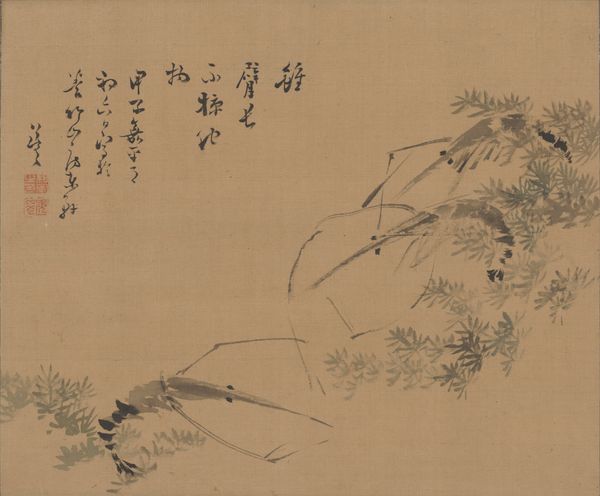
drawing, watercolor, ink
#
drawing
#
water colours
#
ink painting
#
asian-art
#
landscape
#
ukiyo-e
#
form
#
watercolor
#
ink
#
line
Dimensions: 6 3/4 in. × 12 ft. 7 5/16 in. (17.2 × 384.3 cm)
Copyright: Public Domain
Curator: It's interesting how little this drawing attempts to depict depth, opting instead for an even flatness throughout the composition. Editor: You know, that stillness, that evenness really makes it feel intimate, like a personal letter almost. What can you tell us about this work? Curator: This is "Letter Enclosing Flowers," a watercolor and ink drawing created around 1831 by Okada Hankō. It currently resides in the Metropolitan Museum of Art. Editor: The line work is extraordinary. Look at the textures achieved with such economy of means! And that rock! Curator: Yes, the texture relies greatly on the varying density and pressure of the ink. Notice the placement of the seals and how they activate the space. Editor: So you're saying that this is as much about form and composition as it is about representation? Curator: Precisely. Consider its historical context. Edo-period Japan saw the rising influence of the literati movement, emphasizing artistic expression beyond mere technical skill. Hankō was a significant figure in that movement. Editor: So he's deliberately rejecting academic precision? It's about something more, maybe emotional honesty? Curator: Perhaps. I see it more as an exploration of visual language itself, pushing the boundaries of representation within a tradition-bound context. The very title suggests a deliberate intention to combine visual and written forms. Editor: But what’s the social purpose, how would this drawing be seen or used? It's hard to picture who this might have been addressed to at the time. Curator: Its impact then might have been smaller than it is today—the value shifts over time depending on social conditions and exhibition practices. I mean, isn’t it amazing that it continues to provoke us now with these enduring aesthetic questions? Editor: It's certainly a testament to the power of minimal form to still invite a wealth of interpretations and cultural questions. Curator: Agreed. Its simplicity is deceptive; it is a complex interplay of artistic intentions and historical currents.
Comments
No comments
Be the first to comment and join the conversation on the ultimate creative platform.
